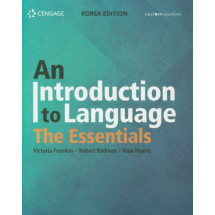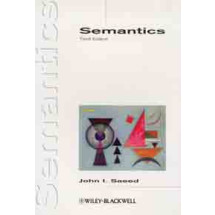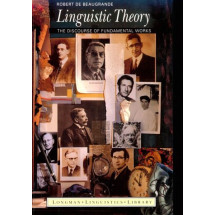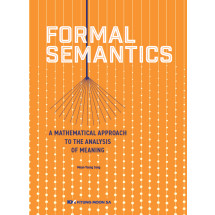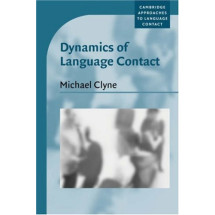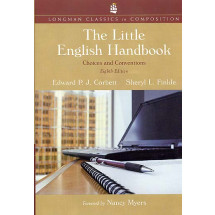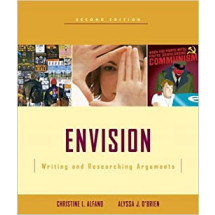Contents.
ESL Guide to the Exercises.
Preface.
Guide to Exercise Types.
Part I.
The Writing Process.
1. Assessing the Writing Situation.
a. Understanding how writing happens
b. Analyzing the writing situation
c. Discovering and limiting a subject
d. Considering the audience
e. Defining a purpose
Exercise 1-1 Discovering a Subject (1c)
Exercise 1-2 Analyzing Audience and Purpose (1d, e)
Exercise 1-3 Analyzing Tone and Purpose
2. Developing and Shaping Ideas.
a. Discovering ideas
b. Developing a thesis
c. Organizing ideas
Exercise 2-1 Developing a Subject Through Freewriting (2a-3)
Exercise 2-2 Generating Ideas (2a)
Exercise 2-3 Thesis Statement: Developing (2b)
Exercise 2-4 Thesis Statement: Revising (2b)
Exercise 2-5 The Formal Outline (2c-2)
Exercise 2-6 Outlining an Essay (2c-2)
Exercise 2-7 Writing an Outline for an Essay (2c-2)
3. Drafting and Revising.
a. Writing the first draft
b. Revising the first draft
c. Editing the revised draft
d. Preparing and proofreading the final draft
e. Giving and receiving comments
f. Preparing a writing portfolio
Exercise 3-1 Revising the First Draft (3b)
Exercise 3-2 Using the Correction Symbols (3d)
4. Writing and Revising Paragraphs.
a. Maintaining paragraph unity
b. Achieving paragraph coherence
c. Developing the paragraph
d. Writing special kinds of paragraphs
e. Linking paragraphs in the essay
Exercise 4-1 Identifying Irrelevant Details (4a)
Exercise 4-2 Identifying the Topic Sentence (4a)
Exercise 4-3 Organizing Paragraphs: Spatial Order (4b-1)
Exercise 4-4 Organizing Paragraphs: Chronological Order (4b-1)
Exercise 4-5 Organizing Paragraphs: Specific to General (4b-1)
Exercise 4-6 Organizing Paragraphs: Problem to Solution (4b-1)
Exercise 4-7 Organizing Paragraphs: Climactic Order (4b-1)
Exercise 4-8 Being Consistent (4b-5)
Exercise 4-9 Arranging and Linking Sentences (4b-6,7)
Exercise 4-10 Using Paragraph Patterns of Development
Exercise 4-11 Parallelism, Repetition, Pronouns, and Transitional Experssions: Identifying (4e)
Exercise 4-12 Opening and Closing an Essay (4d)
Exercise 4-13 Analyzing an Essay's Coherence
5. Designing Documents.
a. Designing academic papers and other documents
b. Considering principles of design
c. Using the elements of design
d. Designing academic papers
Exercise 5-1 Designing Documents
Part II.
Reading and Writing in College.
6. Writing in Academic Situations.
a. Becoming an academic writer
b. Analyzing audience
c. Determining purpose
d. Choosing structure and content
e. Using academic language
Exercise 6-1 Examining Academic Writing
7. Studying Effectively and Taking Exams.
a. Managing your time
b. Listening and taking notes in class
c. Reading for comprehension
d. Preparing for and taking exams
Exercise 7-1Reading for Understanding (7c)
Exercise 7-2 Summarizing (7c)
8. Forming a Critical Perspective.
a. Thinking and reading critically
b. Viewing images critically
c. Writing critically
Exercise 8-1 Reading Critically ?Analyzing, Interpreting, Synthesizing, Evaluating (8a,c)
Exercise 8-2 Viewing an Image Critically ?Analyzing, Interpreting, Synthesizing, Evaluating (8b)
Exercise 8-3 Writing Critically ?Analyzing, Interpreting, Synthesizing, Evaluating (8a,c)
9. Reading Arguments Critically.
a. Recognizing the elements of argument
b. Testing claims
c. Weighing Evidence
d. Discovering assumptions
e. Watching language, hearing tone
f. Judging reasonableness
g. Recognizing fallacies
Exercise 9-1 Testing Claims (9b)
Exercise 9-2 Examining Evidence (9c)
Exercise 9-3 Analyzing Assumptions (9d)
Exercise 9-4 Identifying Logical Fallacies
10. Writing an Argument.
a. Finding a subject
b. Conceiving a thesis statement
c. Analyzing your purpose and your audience
d. Using reason
e. Using evidence
f. Reaching your readers
g. Organizing your argument
h. Revising your argument
i. Examining a sample argument
Exercise 10-1 Analyzing an Argument
11. Using Computer Skills.
a. Managing files
b. Working with spelling checkers and grammar/style checkers
c. Using other word-processing tools
d. Using electronic mail
e. Going places on the Web
f. Working in a group
g. Participating in discussions
h. Working on drafts
Exercise 11-1 Using Your Word Processor (11a, b)
Exercise 11-2 Using Electronic Mail (11d)
Exercise 11-3 Using Online Collaboration (11f, g, h)
Part III.
Grammatical Sentences.
12. Understanding Sentence Grammar.
a. Understanding the basic sentence
b. Expanding the basic sentence with single words
c. Expanding the basic sentence with word groups
d. Compounding words, phrases, and clauses
e. Changing the usual order
f. Classifying sentences
Exercises 12-1 Subjects and Predicates: Identifying and Comparing (12a-1)
Exercises 12-2 Nouns, Verbs, and Pronouns: Identifying Functions
Exercise 12-3 Nouns and Verbs: Writing Sentences (12a)
Exercise 12-4 Parts of the Sentence: Identifying (12a-3)
Exercise 12-5 Sentence Patterns: Combining Sentences (12a-3)
Exercise 12-6 Adjectives and Adverbs: Identifying Function (12b-1)
Exercise 12-7 Prepositions: Writing Sentences (12c-1)
Exercise 12-8 Prepositional Phrases: Identifying Function (12c-1)
Exercise 12-9 Participles (12c-2)
Exercise 12-10 Verbal Phrases: Identifying Function (12c-2)
Exercise 12-11 Verbal Phrases: Revising Sentences (12c-2,3)
Exercise 12-12 Subordinate Clauses: Identifying Function (12c-4)
Exercise 12-13 Subordinate Clauses: Combining Sentences (12c-4)
Exercise 12-14 Subordinate Clauses: Writing Sentences (12c-4)
Exercise 12-15 Compound Constructions: Revising Clauses (12d)
Exercise 12-16 Compound Constructions: Combining Words and Phrases (12d)
Exercise 12-17 Order of Sentences: Rewriting Sentences (12e)
Exercise 12-18 Compound, Complex, and Compound-Complex Sentences: Writing (12f)
13. Case of Nouns and Pronouns.
a. Compound subjects and subject complements
b. Compound objects
c. We or us with a noun
d. Appositives
e. Pronoun after than or as in a comparison
f. Subjects and objects of infinitives
g. Who vs. whom
h. Case before a gerund
Exercise 13-1 Pronoun Case: Compound Subjects and Objects (13a, b)
Exercise 13-2 Pronoun Case: Who and Whom (13g)
Exercise 13-3 Pronoun Case: Review
Exercise 13-4 Pronoun Case: Rewriting a Text
14. Verbs.
VERB FORMS
a. Regular and irregular verbs
b. Sit and set, lie and lay, rise and raise
c. Omitted and endings
d. Helping verbs
e. Verb plus gerund or infinitive
f. Verb plus particle
TENSE
g. Appropriate tense for meaning
h. Sequence of tenses
MOOD
i. Subjunctive verb forms
VOICE
j. Active versus passive voice
Exercise 14-1 Principal Part of Irregular Verbs: Comparing Forms (14a-b)
Exercise 14-2 The Forms of Verbs: Rewriting a Text (14c)
Exercise 14-3 The Forms of Verbs: Rewriting a Text
Exericses 14-4 Helping Verbs and Main Verbs: Comparing Forms (14d)
Exercise 14-5 Sequence of Tenses: Rewriting a Text (14g,h)
Exercise 14-6 Gerunds and Infinitives: Using as Appropriate (14e)
Exercise 14-7 Two-Word Verbs: Understand Meaning (14f)
Exercise 14-8 Verb Tenses: Writing Sentences (14g)
Exercise 14-9 Subjunctive Verb Forms: Rewriting Sentences (14i)
Exercise 14-10 Verb Forms, Tense, and Mood: Editing a Text (14g, h, i)
Exercise 14-11 Active and Passive Voices: Revising Text (14j)
15. Agreement.
a. Agreement between subject and verb
b. Agreement between pronoun and antecedent
Exercise 15-1 Subjects and Verbs: Editing Sentences (15a)
Exercise 15-2 Subjects and Verbs: Rewriting Sentences (15a)
Exercise 15-3 Subject-Verb Agreement: Review (15a)
Exercise 15-4 Pronouns and Antecedents: Editing Sentences (15b)
Exercise 15-5 Agreement: Rewriting Text
Exercise 15-6 Agreement: Review
16. Adjectives and Adverbs.
a. Adjectives only with nouns and pronouns
b. Adjectives after linking verbs
c. Adjectives with objects; adverbs with verbs
d. Comparative and superlative forms
e. Double negatives
f. Overuse of nouns as modifiers
g. Present and past participles as adjectives
h. A, an, the, and other determiners
Exercise 16-1 Adjectives and Adverbs: Comparing Forms (16a-e)
Exercise 16-2 Adjectives and Adverbs: Editing Forms (16a-e)
Exercise 16-3 Articles: Using Appropriately (16i)
Part IV.
Clear Sentences.
17. Sentence Fragments.
a. Tests for sentence completeness; revision of fragments
b. Subordinate clause
c. Verbal or prepositional phrase
d. Other fragments
e. Acceptable uses of incomplete sentences
Exercise 17-1 Sentence Fragments: Revising I
Exercise 17-2 Sentence Fragments: Revising II
Exercise 17-3 Sentence Fragments: Revising III
Exercise 17-4 Sentence Fragments: Revising Text
18. Comma Splices and Fused Sentences.
COMMA SPLICES
a. Main clauses not joined by a coordinating conjunction
b. Main clauses related by a conjunctive adverb or transitional expression
FUSED SENTENCES
c. Main clauses with no conjunction or punctuation
Exercise 18-1 Comma Splices and Fused Sentences: Revising
Exercise 18-2 Comma Splices and Fused Sentences: Combining Sentences
Exercise 18-3 Comma Splices and Fused Sentences: Patterning
Exercise 18-4 Comma Splices and Fused Sentences: Review
19. Pronoun Reference.
a. Clear reference to one antecedent
b. Clear placement of pronoun and antecedent
c. Reference to specific antecedent
d. Indefinite use of it and they
e. Indefinite use of you
f. Clear use of it
g. Appropriate use of relative pronouns
Exercise 19-1 Pronoun Reference: Revising Sentences
Exercise 19-2 Pronoun Reference: Replacing Vague Pronouns
Exercise 19-3 Pronoun Reference: Combining Sentences
Exercise 19-4 Pronoun Reference: Review
20. Shifts.
a. Person and number
b. Tense and mood
c. Subject and voice
d. Indirect and direct quotations and questions
Exercise 20-1 Shifts in Person and Number: Revising Sentences for Consistency
Exercise 20-2 Shifts in Tense: Revising Sentences for Consistency
Exercise 20-3 Revising Sentences for Consistency
Exercise 20-4: Shifts: Review
21. Misplaced and Dangling Modifiers.
MISPLACED MODIFIERS
a. Clear placement of modifiers
b. Limiting modifiers
c. Squinting modifiers
d. Separation of subjects, verbs, and objects
e. Separation of parts of infinitive or verb phrases
f. Position of adverbs
g. Order of adjectives
DANGLING MODIFIERS
h. Dangling modifiers
Exercise 21-1 Misplaced Modifiers: Revising Sentences
Exercise 21-2 Adjectives and Adverbs: Arranging Appropriately
Exercise 21-3 Misplaced and Dangling Modifiers: Revising Text
Exercise 21-4 Dangling Modifiers: Revising Sentences
22. Mixed and Incomplete Sentences.
MIXED SENTENCES
a. Mixed grammar
b. Mixed meaning (faulty predication)
INCOMPLETE SENTENCES
c. Compound constructions
d. Comparisons
e. Careless omissions
Exercise 22-1 Mixed Sentences: Revising
Exercise 22-2 Incomplete Sentences: Revising
Exercise 22-3 Mixed and Incomplete Sentences: Review
Exercise 22-4 Omissions and Faulty Repetitions: Revising Text
Part V.
Effective Sentences.
23. Emphasizing Ideas.
a. Using subjects and verbs effectively
b. Using sentence beginnings and endings
c. Arranging parallel elements effectively
d. Repeating ideas
e. Separating ideas
f. Being concise
Exercise 23-1 Emphasis: Revising Sentences
Exercise 23-2 Emphasis: Combining Sentences
24. Using Coordination and Subordination.
a. Coordinating to relate equal ideas
b. Subordinating to distinguish main ideas
c. Choosing clear connectors
Exercise 24-1 Coordination: Combining Sentences
Exercise 24-1 Subordination: Combining Sentences
Exercises 24-3 Coordination and Subordination: Revising Text
25. Using Parallelism.
a. Using parallelism for coordinate elements
b. Using parallelism to increase coherence
Exercise 25-1 Parallelism: Writing Sentences
Exercise 25-2 Parallelism: Combining Sentences
Exercise 25-3 Parallelism: Editing Text
26. Achieving Variety.
a. Varying sentence and length structure
b. Varying sentence beginnings
c. Inverting the normal word order
d. Mixing types of sentences
Exercise 26-1 Sentence Beginnings: Revising for Variation
Exercise 26-2 Varying Sentences in Paragraphs
Part VI.
Punctuation.
27. End Punctuation.
a. The period
b. The question mark
c. The exclamation point
Exercise 27-1 End Punctuation: Editing Sentences
28. The Comma.
a. Main clauses linked by coordinating conjunction
b. Introductory elements
c. Nonessential elements
d. Absolute phrases
e. Phrases expressing contrast
f. Series and coordinate adjectives
g. Dates, addresses, place names, long numbers
h. With quotations
i. To prevent misreading
j. Misuse and overuse
Exercise 28-1 Commas Between Main Clauses and After Introductory Elements: Revising Text (28a,b)
Exercise 28-2 Commas in Sentences with Nonessential Elements, Absolute Phrases, and Phrases of Contrast: Editing (28c,d,e)
Exercise 28-3 Commas with Nonessential Elements, Absolute Phrases, and Phrases of Contrast: Combining Sentences (28c,d,e)
Exercise 28-4 Commas with Series, Coordinate Adjectives, Dates, Addresses, Long Numbers, and Quotations, Editing (28f,g,h)
Exercise 28-5 Misused Commas: Editing (28j)
Exercise 28-6 Commas: Editing Text
29. The Semicolon.
a. Main clauses not joined by a coordinating conjunction
b. Main clauses not related by a conjunctive adverb ortransitional expression
c. Long or internally punctuated main clauses
d. Long or internally punctuated series items
e. Misuse and overuse
Exercise 29-1 Semicolon: Editing Sentences
Exercise 29-1 Commas and Semicolons: Editing Text
30. The Apostrophe.
a. Possessive case
b. Misuse with noun plurals, verbs, and personal pronouns
c. Contractions
d. Plurals of abbreviations, dates, and words or characters named as words
Exercise 30-1 Apostrophes for Possessive Case: Changing Words
Exercise 30-2 Apostrophes for Contractions and Plurals
Exercise 30-3 Apostrophes: Editing Text
31. Quotation Marks.
a. Direct quotations
b. Quotation within a quotation
c. Dialog
d. Titles of songs, short stories, etc.
e. Words used in a special sense
f. Overuse
g. Placement with other punctuation marks
Exercise 31-1 Quotation Marks: Editing Sentences
Exercise 31-2 Quotations: Rewriting Text
32. Other Punctuation Marks.
a. The colon
b. The dash
c. Parentheses
d. Brackets
e. The ellipsis mark
f. The slash
Exercise 32-1 The Colon, the Dash, Parentheses, Brackets, the Ellipsis Mark, and the Slash: Editing Sentences
Exercise 32-2 Punctuation: Review of Chapters 27-32
Part VII.
Mechanics.
33. Capitals.
a. First word of sentence
b. Titles of works
c. Pronoun I and interjection O
d. Proper nouns and adjectives
e. Titles before proper names
f. Misuse of capitals
Exercise 33-1 Capitals: Rewriting Sentences
34. Underlining or Italics.
a. Underlining vs. italics
b. Titles of books and periodicals
c. Names of ships, aircraft, spacecraft, trains
d. Foreign words and phrases
e. Words, letters, and numbers named as words
f. For emphasis
g. In online communication
Exercise 34-1 Underlining or Italics: Editing Sentences
35. Abbreviations.
a. Titles before and after proper names
b. Familiar abbreviations and acronyms
c. BC, BCE, AD, AM, PM, no., and $
d. Latin abbreviations
e. Inc., Bros., Co., and &
f. Misuse with units of measurement, geographical names, etc.
Exercise 35-1 Abbreviations: Editing Sentences
36. Numbers.
a. Numerals vs. words
b. For dates, addresses, etc.
c. Beginning sentences
Exercise 36-1 Numbers: Editing Sentences
Part VIII.
Effective Words.
37. Using Appropriate Language.
a. Revising nonstandard dialect
b. Using regionalisms only when appropriate
c. Using slang only when appropriate
d. Using colloquial language only when appropriate
e. Revising neologisms
f. Using technical words with care
g. Revising indirect or pretentious writing
h. Revising sexist and other biased language
Exercise 37-1 Appropriate Words: Revising Text (37a-g)
Exercise 37-1 Biased Language: Revising Sentences (37h)
38. Using Exact Language.
a. Using the right word for your meaning
b. Balancing the abstract and concrete, the general and specific
c. Using idioms
d. Using figurative language
e. Using fresh expressions
Exercise 38-1 Denotation: Comparing Forms (38a)
Exercise 38-2 General and Specific Words, Abstract and Concrete Words: Revising Text (38b)
Exercise 38-3 Idioms: Comparing Forms (38c)
Exercise 38-4 Trite Expressions: Revising Sentences (38e)
39. Writing Concisely.
a. Focusing on subject and verb
b. Cutting or shortening empty words and phrases
c. Cutting unnecessary repetition
d. Reducing clauses to phrases, phrases to single words
e. Eliminating there is and it is constructions
f. Combining sentences
g. Rewriting jargon
Exercise 39-1 Empty Words and Phrases: Revising Text (39b)
40. Using Dictionaries.
a. Choosing a dictionary
b. Working with a dictionary뭩 contents
Exercise 40-1 Using the dictionary
41. Spelling and the Hyphen.
a. Recognizing typical spelling problems
b. Following special rules
c. Developing spelling skills
d. Using the hyphen to form or divide words
Exercise 41-1 Commonly Confused Words (41a)
Exercise 41-2 Spelling Rules: Practice (41b)
Exercise 41-3 The Hyphen in Compound Words, Fractions, and Compound Numbers: Practice (41d)
Exercise 41-4 Dividing Words Correctly
Exercise 41-5 Dividing Electronic Addresses
Part IX.
Working with Sources.
42. Writing a Short Documented Paper.
a. Using summary, paraphrase, and direct quotation
b. Avoiding plagiarism
c. Taking notes
d. Evaluating sources
e. Documenting sources
f. Sample short documented paper
Exercise 42-1 Writing Paraphrases
Exercise 42-2 Identifying Plagiarism
Exercise 42-3 Writing Bibliographic Entries
Acknowledgments.
Index.


